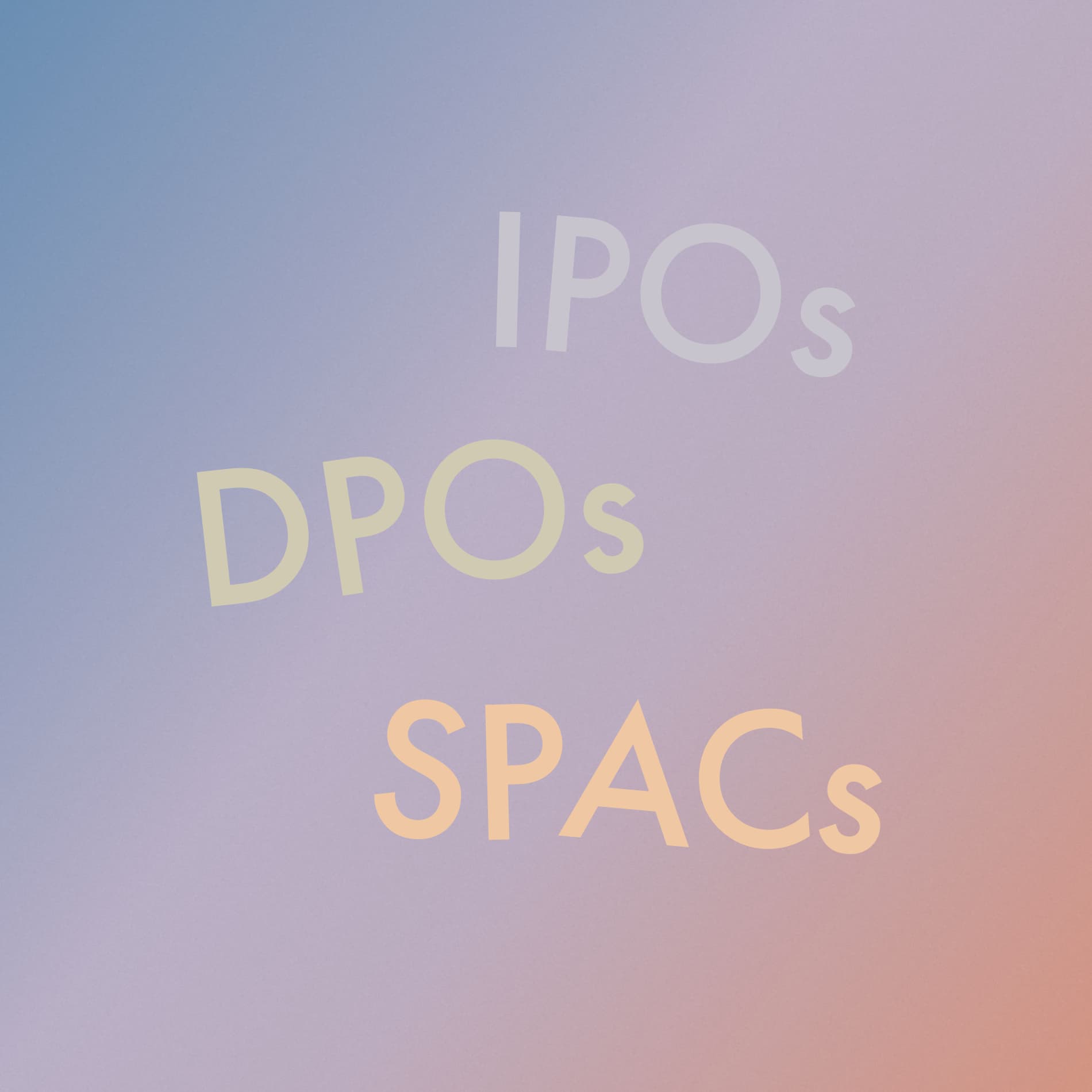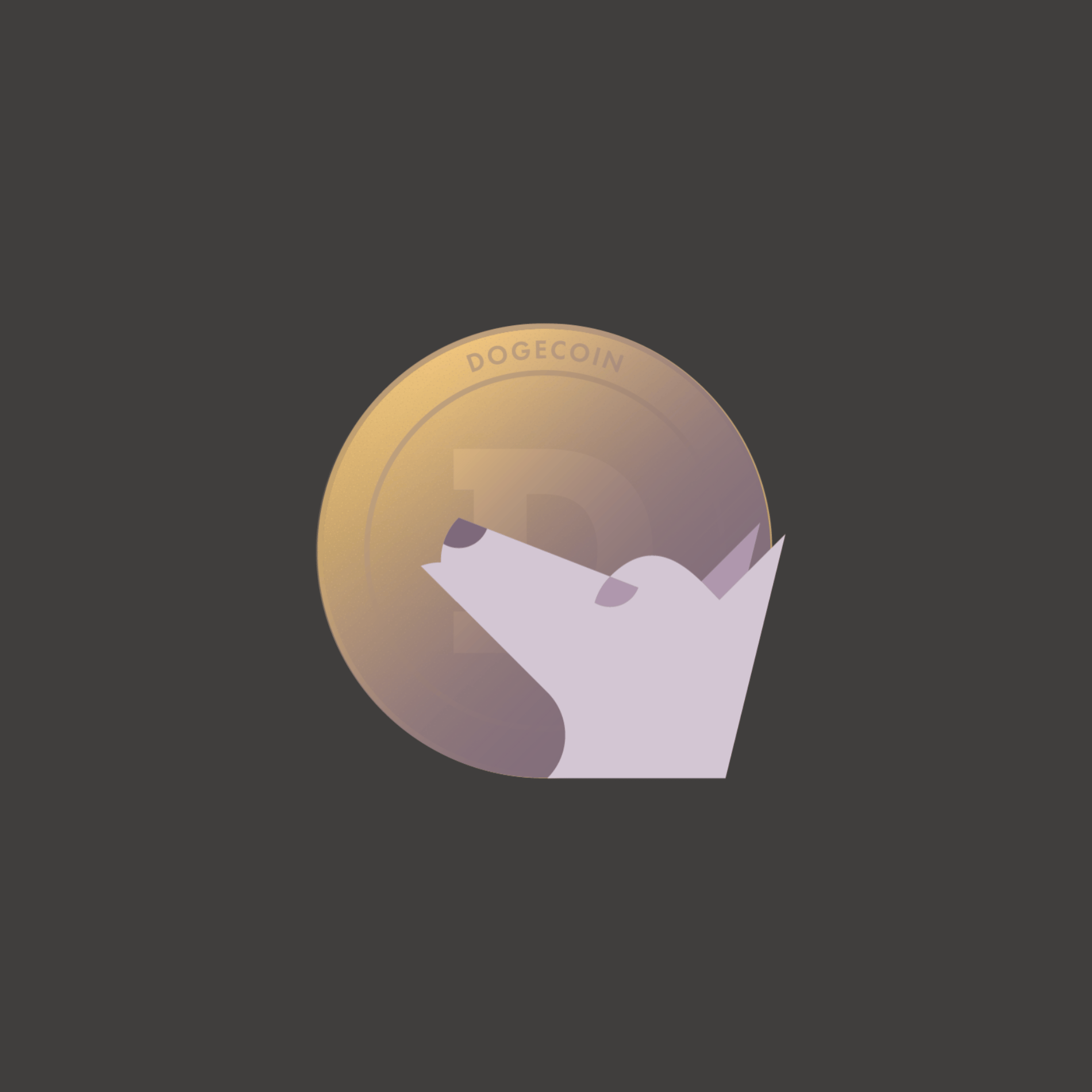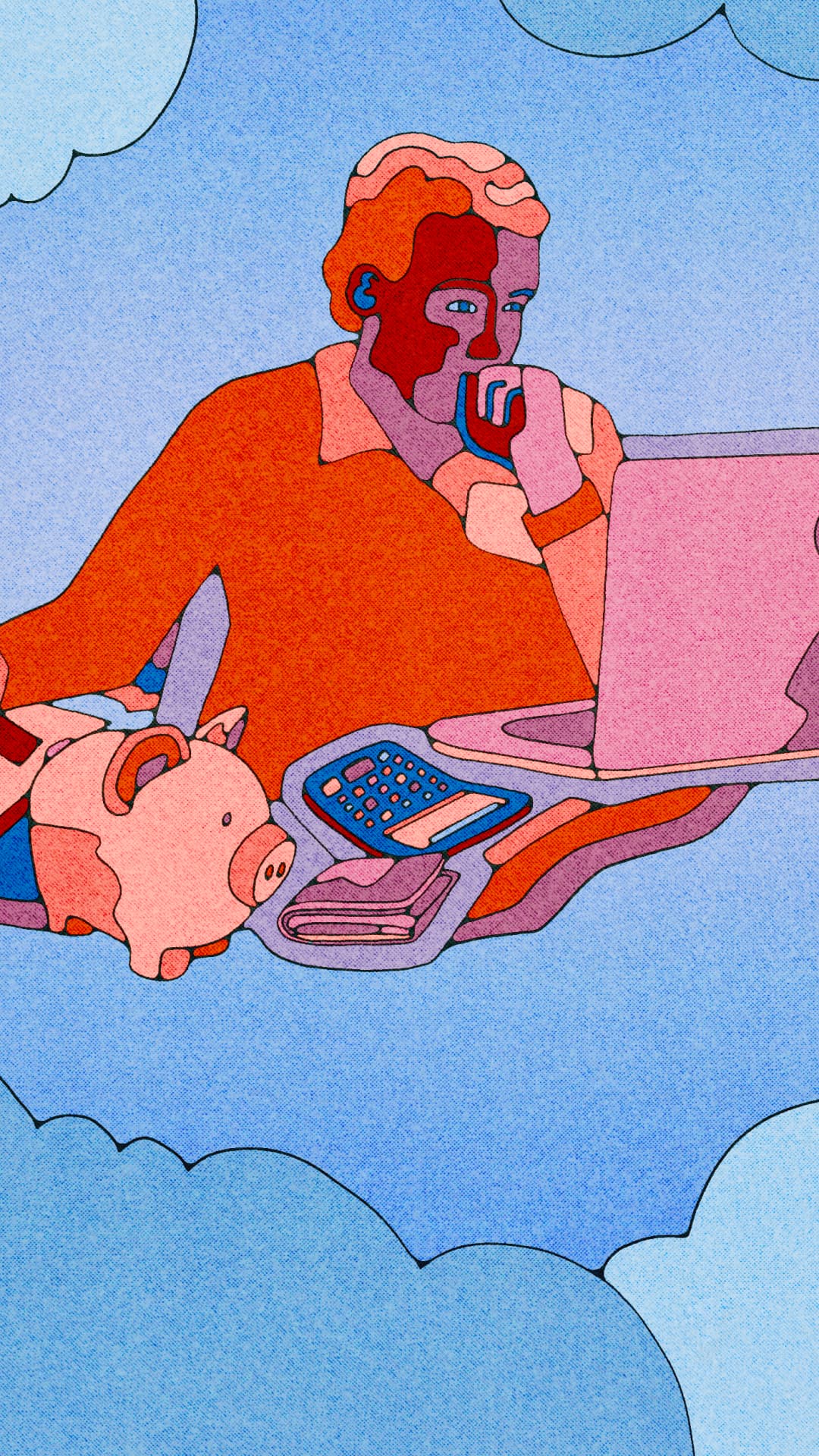
Finance for Humans
A Freelancer’s Guide to Saving Like a Corporate Lifer
Self-employment comes with a lot of perks, mostly involving not having a boss. The tradeoff? No savings or retirement benefits. Womp womp. That means freelancers need to create their own savings strategy. Here’s how.
Wealthsimple makes powerful financial tools to help you grow and manage your money. Learn more
There are a lot of lowercase-b benefits of working for yourself. Like: choosing your own hours and picking your own job title (Chief Executive of Everything Officer?) and not having a boss who’s always “just checking in” at 10:33 p.m. on a Sunday about some project that got shoved off on you. And that’s to say nothing about the possibility of your one-person show snowballing into a thriving business that you get to run. Unfortunately, being the President and Founder of You, Inc., usually doesn’t come with, let’s call them, capital-B Benefits — like RRSP-contribution matching, parental leave, or gym-membership reimbursements. But! There are ways that self-employed folks can replicate the savings perks of working for The Man, without having to give up the glorious, glorious freedoms of not working for The Man.
Let’s get started.
Save Money Without Having to Think About Saving Money
All the advice in this article flows from one super-important tip: set up automatic withdrawals from your chequing account. Seriously. It’s imperative. One of steady employment’s biggest conveniences is that most companies will automatically take out taxes from your paycheque, as well as pull out money for things like retirement. You don’t have that luxury as a freelancer/solo act, so you have to replicate it yourself and make it impossible not to put money aside. Because it’s really easy to find other ways to spend the cash you should be stashing away. And, as a freelancer, you need a lot of cash stashed away. Which leads us to our next point…
Set Aside 30% From Every. Single. Cheque. for Taxes
The first big thing every freelancer needs to set aside money for is taxes, since not paying taxes is a reliable way to make the government very unhappy with you in a hurry. Most freelancers can expect to owe roughly 30% on all income they rake in throughout the year, so you’ll want to put aside at least that much from every cheque. Once you do that, you can use the rest of your cash for much more fun things, but squirreling away tax money is a bare-minimum must-do.
Here are the 2022 Canadian federal tax rates, to give you a better idea of how much you can expect to owe:
15% on the first $50,197 of taxable income
20.5% on taxable income between $50,198 and $100,392
26% on taxable income between $100,393 and $155,625
29% on taxable income between $155,626 and $221,708
33% on any taxable income over $221,708
One nice-ish thing about living in Canada is that typically, once the Canada Revenue Agency (CRA) sees that you’re earning freelance income, it will set up a quarterly payment plan for you, with a required payment amount based on your previous year’s income. But if that hasn’t happened yet, or if your income fluctuates big time, 30% should cover most freelancers’ tax obligations — unless you’re a true all-star who pulls in more than $216,511.
Build a Rainy-Day Fund
OK, next: everyone needs a rainy-day fund of some sort, but this is especially true for freelancers, who often have to send several desperate-but-not-too-desperate please-pay-me emails before clients clear outstanding invoices. Scott Simpson, a Wealthsimple investment-and-retirement specialist, suggests having at least six months’ worth of household income in a bank savings account to weather inevitable periods of MIA payments — or, worse, to endure stretches of zero work. That way, even if the stock market crashes, say, or you can’t land work, you’ll have enough liquid cash to ride out tough seasons. In most cases, though, unless you’re planning to make a big purchase or to retire soon, you probably don’t want to keep heaps and heaps of liquid cash on hand, for reasons we’ll talk about more in a moment. Just have enough to cover a half year’s worth of bills.
Abide by the Rule of 25
So we’ve talked about stashing away money for taxes and for lean times. But what if you actually want to retire one day? How much money should you save, then, beyond the basic 30% for taxes and your rainy-day fund? Consider the Rule of 25, which holds that you’ll need about 25 times your anticipated annual income to retire. This little equation obviously doesn’t account for some important variables — your age, your spending habits, inflation, etc. — but it’ll give you a general picture of how much cash you need.
Recommended for you
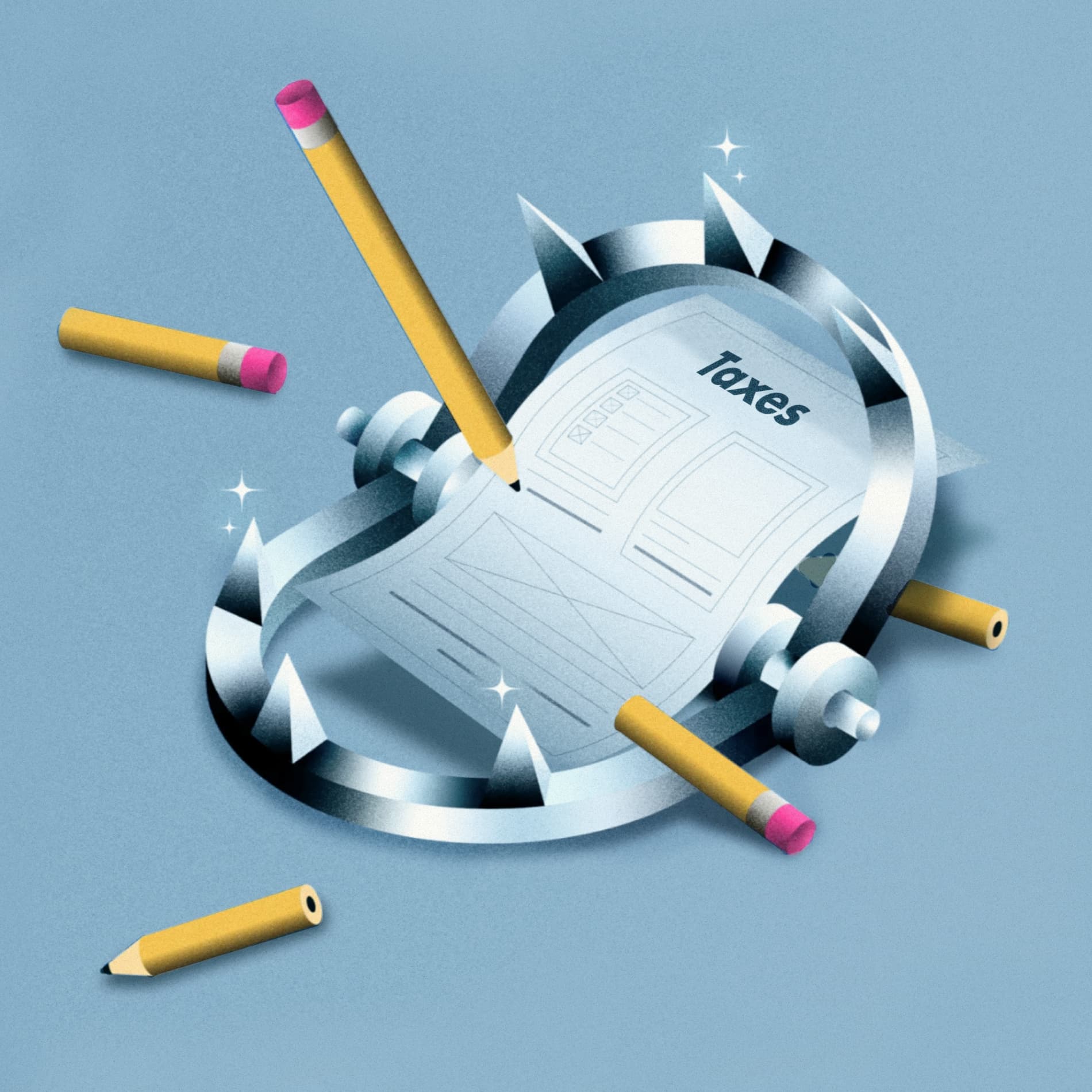
Five Tax Traps — And How, If You Start Now, You Can Avoid Them
Finance for Humans
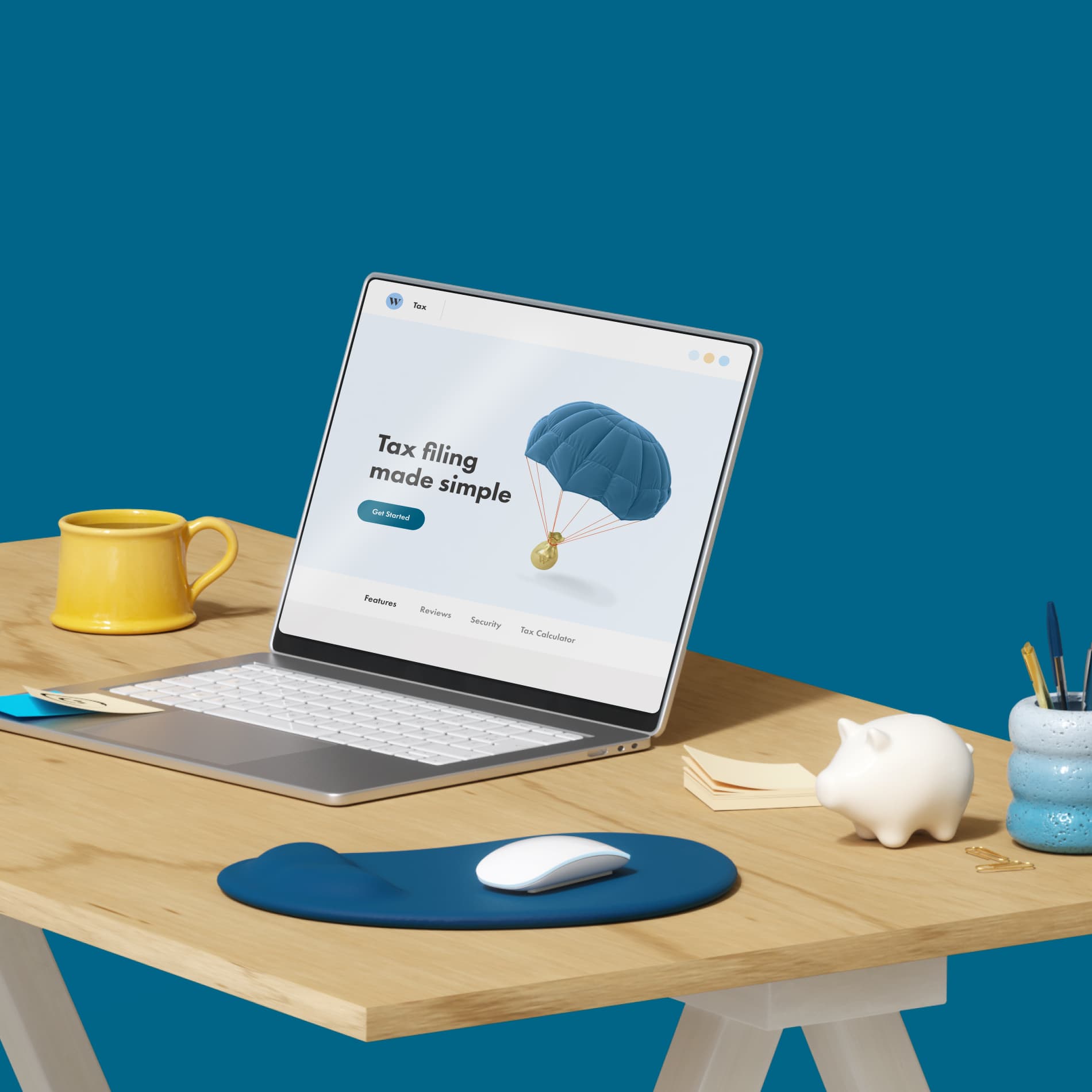
Is This the Year to Try Wealthsimple Tax? (Um, Probably. Yes)
Finance for Humans

Why the Asset Bubble Popped, All at Once
Finance for Humans

Nervous About Overheated Stocks? Let’s Revisit Four of Our Best-Ever Insights
Finance for Humans
For example, if you think you’ll need $50K to live off annually when you quit working, you’ll want to have $1.25 million (or $50,000 x 25) saved by the time you bow out from your job. You can divide that number by the total years left till you retire to figure out how much you need to save annually and monthly to hit your goal. (Or if that all sounds terribly complicated, Wealthsimple has a handy retirement calculator that should give you a similar figure.) Then you can add that number to the 30% you’re already putting away for taxes and create a budget around that.
Let Your Savings Snowball
Did the Rule of 25 trigger some anxiety for you? It did the first time we crunched the numbers. Before stressing out about being behind on retirement savings, keep in mind two things: first, you can expect to receive anywhere from $10,000 to $20,000 from Canada’s Old Age Security and the Canada Pension Plan every year once you reach 65. So, if you want to hit the beach at that age and have an annual income of $50,000, you’ll probably need to withdraw closer to $40,000 per year from savings.
The other major thing that makes preparing for retirement less daunting is that, if you invest in diversified assets, your money will grow a lot fast than if it sits in a bank savings account. The latter, as we mentioned up top, is a good place for tax and rainy-day money. But “bank savings accounts have rates of return of less than 1%,” explains Simpson. A medium-risk portfolio, in comparison, will have a 4% to 5% estimated annual return. And that makes a big difference over time: $100 invested today in a fund that grows 5% annually will snowball to roughly $430 over the next 30 years.
For most people, the best way to make such investments is with a tax-advantaged investment account, like an RRSP or a TFSA, since both offer significant tax breaks when you invest in stocks, bonds, ETFs, and other assets. Seriously, if you do nothing else, dear freelancer, max out your RRSP and/or TFSA. If you don’t, you’re leaving money on the table.
RRSP or TFSA? Pick the Right Tax-Advantaged Account
Let’s dwell a minute longer on tax-advantaged retirement accounts, because they’re really important. There are two types of tax-advantaged retirement accounts in Canada, the Registered Retirement Savings Plan (RRSP) and the Tax Free Savings Account (TFSA). Both offer major tax advantages, but they have some key differences, which you can read all about here. Generally speaking, though, if you make less than $50,000 a year, you should contribute to a TFSA first, then to an RRSP. If you make more $50,000/year, max out your RRSP first, since doing so will significantly reduce your taxable income. Again, read this if you really want to understand the intricacies of RRSPs vs. TFSAs. The limit for your TFSA is $6,000 for 2022 and $6,500 for 2023. The limit for an RRSP is 18% of your earned income from the previous year, up to a total contribution of $30,780.
OK! Whew!
You did it! You’re now ready to be a pro freelancer and to set up your automatic bank transfers — one that goes to an account for paying taxes, one that goes into a rainy-day fund (till you get enough in it), and one that goes into an RRSP or a TFSA. Then, once the money is withdrawn, pretend that’s gone forever — or at least until tax season or until you’re ready to retire. In the meantime, enjoy your sweet, sweet, professional freedom and all your non-existent 10:33 p.m. angry Sunday emails.
Wealthsimple Favourites
- A computer language that controls the financial world
- The perfect guide to every annoying tax question you have
- What’s up with all those crypto laser-eye profile pics?
- How do I diversify, anyway?
- Why the stock market goes up over time
- Raising middle-class kids when you’re no longer middle class.
Heather Hudson is a Toronto-based freelance writer and contributor to the Toronto Star.
